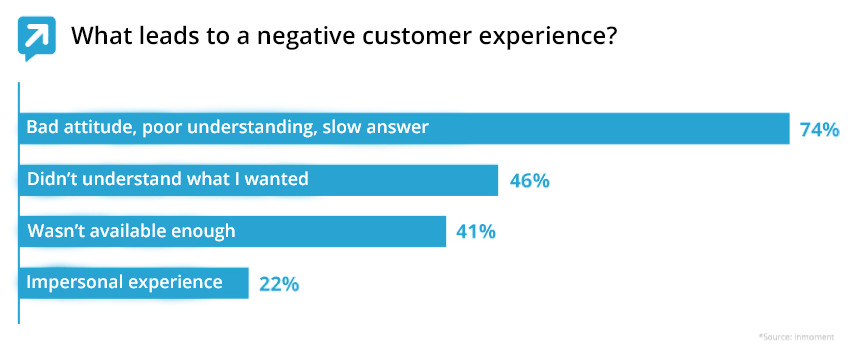If you’ve been following the major trends of Customer Care lately, you’re bound to have noticed a surge of topics linked to feelings these past months.
We are told about the importance of adding a layer of emotions into Customer Care to better understand your customer, reassure and convince them, supported by evidence from studies and neuroscience.
While evidently feelings are key in successful Customer Relations, they are still far up on what I call “the Customer Relations equivalent of Maslow’s hierarchy of needs”. Many companies still have more tangible issues to fix before claiming they want to appeal to their customers’ deepest feelings.

While customers wish for an exchange driven by feelings and empathy, they first of all wish for their problem to be solved.
When you ask them what are the main reasons for a negative experience, customers mostly report bad attitude, slow answers, poor understanding, low availability, well before mentioning impersonal exchanges or lack of emotion.

Companies need to solve problems from the lower levels of the hierarchy of needs first to be able later on to focus on more advanced challenges.
Some stages such as improving politeness and clarity can be achieved through training teams whereas others like faster response rates to all messages or managing efficiently channels will be achieved by structural transformation of your Customer Care department. This is accomplished by reshaping teams, and implementing tools that take these challenges into account.

Younger generations who have solely digital habits from a more and more younger age are progressively abandoning more traditional channels and turning to messaging apps or social media. These new means of communication show their expectations for off-line interactions, which means they won’t be limited by opening hours for example.
To counter this evolution, businesses now need to take an omni-digital approach which will help them deliver equal levels of customer experience across all digital channels. Unfortunately, the conventional organisation of customer care departments tends to delay their progression towards focusing on customers’ more subtle needs.

When teams are organized in technological silos (an email team, a phone-calls team, a social media team, etc.), information doesn’t circulate easily and customers will get different experiences depending on the channel. The customer might also get frequently redirected depending on his request, which only exacerbates frustrations.
Even worse, this approach doesn’t allow you to even the workload across several teams, which means it can be very difficult to stand by response delays and some messages might even be downright ignored if they expire before agents get to answering them.
To be able to concentrate on subtler customer issues, an in-depth rearrangement of customer care structures seems essential. Before speaking in terms of users’ feelings, let’s first concentrate on their actual problems.
Originally published Jul 09, 2018, updated Dec 30, 2022





